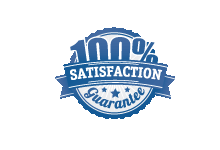 As a web designer I have been lucky enough to work on several website projects with lots of different people
As a web designer I have been lucky enough to work on several website projects with lots of different people
from various business sectors. With each new website project I learn what works well and what doesn’t work so well.
Armed with this knowledge I thought I would share some tips with you on “What to do before you call a web designer” to help your website project go as smoothly and efficiently as possible.
Before I get into the list of tips, just one caveat. Some people want a total hands off approach – meaning they will hire a web designer to do completely everything (and I mean everything) to people that might be more hands on. (i.e. they will give the web designer the copy, images even the headings of pages). Most people fall somewhere in the middle – those are the people that will probably find this article most useful.
OK back to the tips – something has triggered you to say to yourself “I need a website”. Your next thought might be “ok, I need to pick up the phone, jump on the internet, or start asking around for a great web designer”
I URGE YOU TO STOP RIGHT THERE.
That is the path many business owners take, but I am going to share with you a better way. A way that dramatically increases the chances that your website will be a smooth and successful (even fun) project.
Step 1 – Fire up a word document – or write these questions on a piece of paper then write your answers down below each question.
QUESTIONS:
1) Why do I want a website? (be as specific as possible)
“I want to promote my business” is too generic of an answer. You need to dig deeper. Why do you want to promote your business?
“So more people will see my products and/or services” – almost there.. keep going. Why?
“I want people to call us to get an estimate for xxx” – BINGO !!
There is a specific objective of the website. One that should be the basis of your decision making.
Sometimes this is one of the hardest things to nail down. Often people will say I want x and y and z and … you get the idea.
2) What is the primary message I want to convey to potential customers?
This is another way of asking what makes you unique? Why should people do business with you.- Write it down
3) Look at other websites.
This doesn’t have to be just your competitors (although it can be) but take notes on two things: What websites do you like and what specifically do you like about them – color, design, layout, font, etc.
What websites do you hate and what specifically do you hate about them – same as above.
Design is subjective. Maybe I love blue – you hate blue. I like the website navigations to the left – you like it to the right.
Being able to give preferences helps both you and the designer.
4) What pages do you think the website should have?
You might have a ‘Home’ page, a ‘Services’ page, a ‘Contact’ page etc.
5) What content would go on those pages?
Think about what potential customers want to know about. You need to be a little critical here because of one harsh fact.
People don’t read websites – they scan them. <-Tweet This
So you don’t need to have every possible thing about your business on a page – just things essential to a customer trying to make a decision. In our sample case-enough information for someone to decide to buy from you – right? Bzzzt, Wrong. Remember our sample objective was to get someone to contact you for an estimate.
If they happen to decide to buy from you on the spot then great that’s a bonus. But in our sample case the business owner felt that (generally) his customers needed more input (via estimate) to make a final buy decision.
6) Jot down – even in bullet form the information you think should go on each page.
This will give the web designer a rough idea on how to design a page – will the page have only two sentences and they will need to
fill some space with images to make it aesthetically more pleasing – or is the page full of text in which case there are very few images or none at all.
7) Gather up potential images to use in your website.
Digital images are always preferred and easier to work with. This will give a web designer guidance when it comes to design considerations. Will you need to hire a photographer to take some photos or will the ones you already have be ok. Typically web designers have hundreds if not thousands of images you may be able to use.
8) Think about what types of functionality you want your website to have.
Do you want to have videos on your website? Some type of online calculator? Will you be selling items? Will you be shipping?
Do you want social media integrations – if so what social media channels? If you said ‘we want facebook on our website’ – what does that mean? Does that mean you want a ‘like’ button [fblike style=”standard” showfaces=”false” width=”450″ verb=”like” font=”arial”] or does that mean you want a ‘share on your timeline’ button, [fbshare type=”button” width=”100″]
or does that mean you want a facebook feed embedded into your website so people can see posts? The more specific the better.
9) Establish a rough completion date & budget range.
This will help in creating a timeline of who does what when. Most projects tend to take a little longer than the average person thinks.
That’s because they didn’t follow any of these tips – but now you have the advantage and have saved all kinds of time. Regarding budget notice I didn’t say establish a specific budget number? I said ‘range’- Why? Many times while working on a website there typically comes a time when someone will want an additional ‘thing’ – not talked about at the beginning of the project. It could be the customer or the web designer that has suggested a new item/feature. IF there is a strong case that the new item/feature will be a big benefit then I suggest that it be incorporated into the website. BUT expect to pay an additional amount for the extra feature/function. Would you go to the grocery store to buy an apple then at the checkout say to the cashier “oh I also want that magazine too, you should just throw that in for free”?
10) Be open to change.
I always tell my clients that no one can know their business better than themselves. However if you have hired an experienced web designer they will have lots of valuable advice to give. I strongly suggest keeping an open mind to their input. Weigh the pros and cons of a potential change in the project and if a slight change will make it a better website – then go for it.
Step 2 – Now go ahead and call your friendly neighbourhood web designer.
If you followed the above then you should have a good sense of what you are looking for in a website. You are already way ahead of the average person that just quickly picked up the phone. You will get a more accurate estimate, (in terms of both time to complete and how much it will cost) there will be less back and forth emails/phone calls and the resulting website that you get will perform better. And isn’t that what everyone wants at the end of the day?
If you found this article helpful please share it.
Need help with your website? We love helping small business’ with their websites. Feel free to contact us.
AUTHOR: About Eric Rowen


Leave a Reply